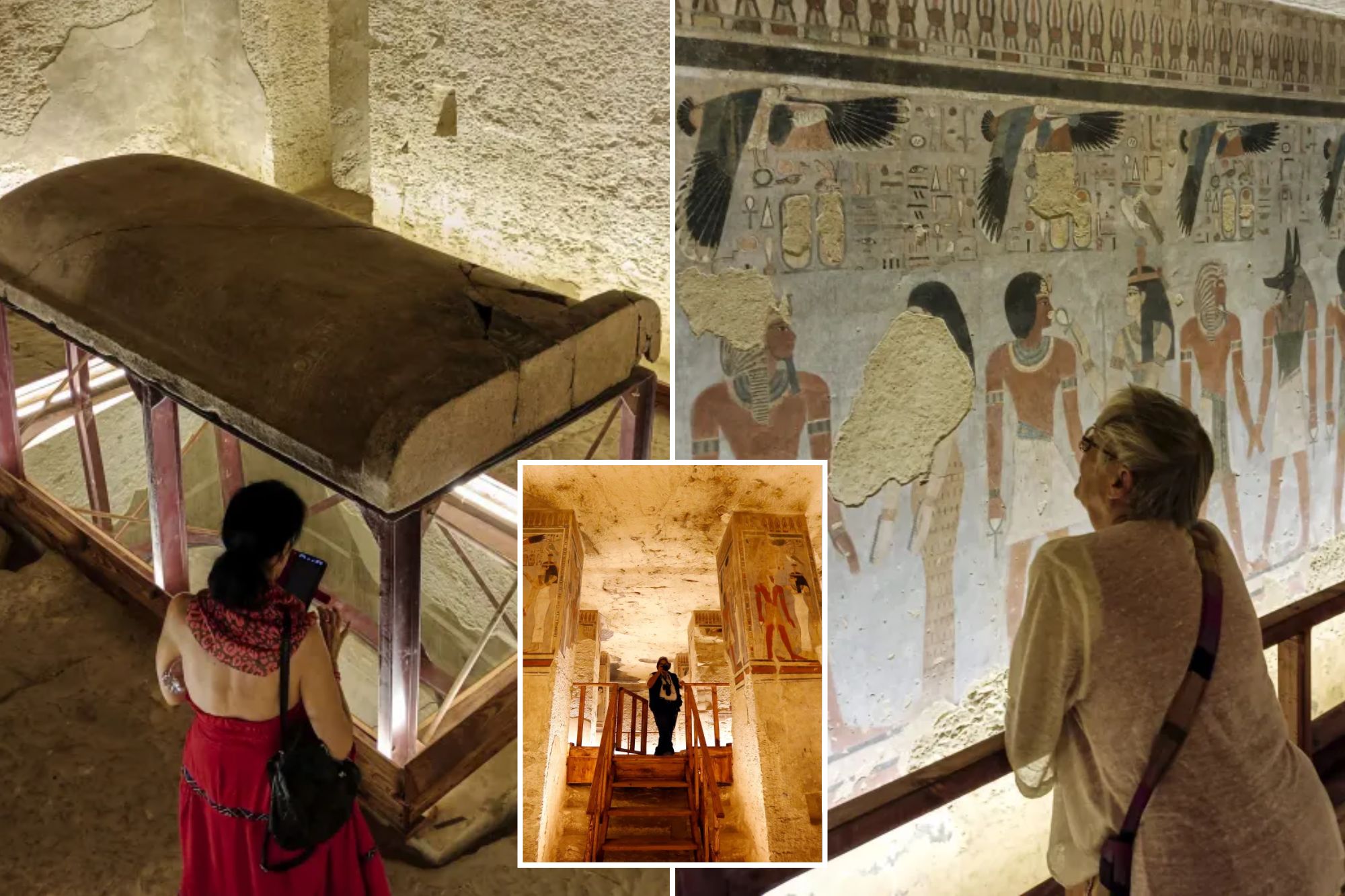World
Egypt Unveils Tomb of Pharaoh Amenhotep III After 20-Year Restoration

Egypt has reopened the tomb of **Pharaoh Amenhotep III**, located in Luxor, after over two decades of extensive renovation. This significant occasion coincides with preparations for the upcoming official inauguration of the **Grand Egyptian Museum** in Cairo, set to open on **November 1, 2023**.
The tomb, situated on the western side of the historic **Valley of the Kings**, was discovered in **1799** but faced looting shortly after. Egyptian antiquities authorities confirmed that the tomb’s contents, including the sarcophagus, were taken. The restoration project, led by a Japanese team, spanned three phases over the past twenty years, focusing on revitalizing the exquisite wall paintings depicting Amenhotep III and his wife, **Queen Tiye**.
According to **Mohamed Ismail**, secretary-general of the **Supreme Council of Antiquities**, the tomb is particularly fascinating. It features a frame of the stolen sarcophagus box, with its lid displayed in its original position. Visitors can access a **36-meter-long** (approximately **118 feet**) and **14-meter-deep** (around **45 feet**) downward-sloping passageway that leads to the main burial chamber of the king and two additional chambers for his wives, **Queens Tiye and Sitamun**.
Despite its grandeur, Ismail noted that this tomb is less decorated than others in the valley. The paintings within depict Amenhotep III alongside various ancient Egyptian gods, while inscriptions from the **Book of the Dead** adorn the burial chamber. This collection of spells served to guide the deceased through the underworld, reflecting the rich spiritual beliefs of ancient Egypt.
The mummy of Amenhotep III was relocated by ancient priests to the tomb of his grandfather, **Amenhotep II**, also in the Valley of the Kings. Currently, the severely damaged mummy is displayed at the **National Museum of Egyptian Civilization**, alongside 16 other mummies of ancient Egyptian royalty.
Amenhotep III, regarded as one of the most influential pharaohs of the **18th Dynasty**, ruled from **1390 B.C. to 1350 B.C.** Known as **Amenhotep the Great**, he ascended the throne as a teenager and enjoyed a reign lasting up to **38 years**.
The reopening of Amenhotep III’s tomb is part of Egypt’s broader strategy to revitalize its tourism sector, a vital source of foreign currency. The tourism industry faced significant challenges following the political unrest and violence that erupted after the **2011 uprising**. By showcasing its rich pharaonic heritage, Egypt aims to attract a greater number of international visitors, thereby stimulating economic growth and cultural appreciation.
As excitement builds for the opening of the Grand Egyptian Museum, the rediscovery of Amenhotep III’s tomb serves as a poignant reminder of Egypt’s ancient past and its ongoing endeavors to share this history with the world.
-

 Lifestyle5 months ago
Lifestyle5 months agoLibraries Challenge Rising E-Book Costs Amid Growing Demand
-

 Sports4 months ago
Sports4 months agoTyreek Hill Responds to Tua Tagovailoa’s Comments on Team Dynamics
-

 Sports4 months ago
Sports4 months agoLiverpool Secures Agreement to Sign Young Striker Will Wright
-

 Lifestyle4 months ago
Lifestyle4 months agoSave Your Split Tomatoes: Expert Tips for Gardeners
-

 Lifestyle4 months ago
Lifestyle4 months agoPrincess Beatrice’s Daughter Athena Joins Siblings at London Parade
-

 Science4 months ago
Science4 months agoSan Francisco Hosts Unique Contest to Identify “Performative Males”
-

 World4 months ago
World4 months agoWinter Storms Lash New South Wales with Snow, Flood Risks
-

 Science5 months ago
Science5 months agoTrump Administration Moves to Repeal Key Climate Regulation
-

 Business5 months ago
Business5 months agoSoFi Technologies Shares Slip 2% Following Insider Stock Sale
-

 Science5 months ago
Science5 months agoNew Tool Reveals Link Between Horse Coat Condition and Parasites
-

 Sports5 months ago
Sports5 months agoElon Musk Sculpture Travels From Utah to Yosemite National Park
-

 Science5 months ago
Science5 months agoNew Study Confirms Humans Transported Stonehenge Bluestones









